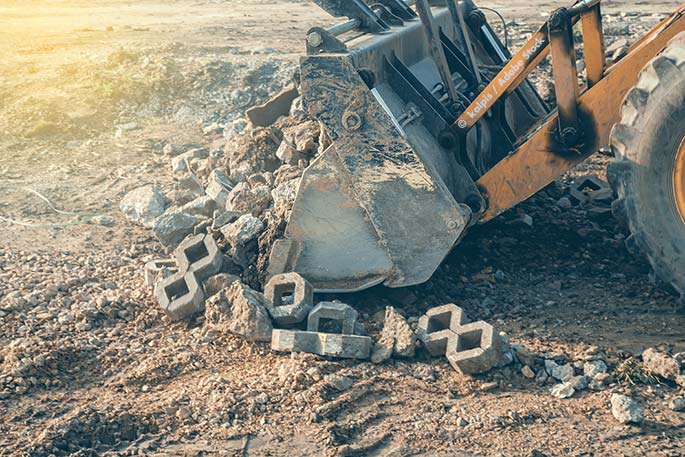
Concrete is a major building material. One important application is in the construction of highways. According to the Federal Highway Administration, there are over 160,000 miles of highway in the United States. Most of this system is around 50 years old, and much of it needs rehabilitation or total reconstruction.
That calls for a lot of new concrete. However, collecting the materials to make it puts stress on natural resources. Fortunately, some of this material can be collected by recycling old concrete, highlighting the benefits of recycling concrete. This is particularly convenient when ripping out old concrete highways to make way for new ones in a nearby location.
How Concrete is Made
To understand concrete recycling, a good first step is to consider how concrete is made. According to the Portland Cement Association, “In its simplest form, concrete is a mixture of paste and aggregates, or rocks.” The paste is made from water and cement, and the aggregate refers to sand and small pieces of rock.
When these ingredients are mixed together it makes a semi-liquid material which can flow to fit a desired volume. It then hardens into a rock-like material. Aggregate is usually obtained by digging rocks out of the earth and then crushing them. However, the aggregate can be made by grinding up and crushing existing concrete.
Benefits of Concrete Recycling
Concrete recycling in this manner is an example of the circular economy, and there are many benefits. The traditional economy is a linear process, where the pattern is: make a product, use it, then dispose of it. For the circular economy, the pattern is: make a product, use it, recycle it, then make it (or another product) again. Like all recycling, many of the benefits of concrete recycling are environmental.
Concrete recycling conserves natural resources because new rock doesn’t need to be dug up. It also preserves biodiversity because it leaves undisturbed the habitats that would have been disrupted by rock harvesting. Concrete recycling can also reduce greenhouse gas emissions by reducing the distance materials must be carried. In short, concrete recycling is good for the environment.




































































































































 Three Ways to Engage Teams and Clients to Maximize Your Recycling Program Engagement
Three Ways to Engage Teams and Clients to Maximize Your Recycling Program Engagement  How to Integrate Accessibility Into Your Sustainability Planning
How to Integrate Accessibility Into Your Sustainability Planning  Why Park Benches Can Promote Workplace Well-Being
Why Park Benches Can Promote Workplace Well-Being 
